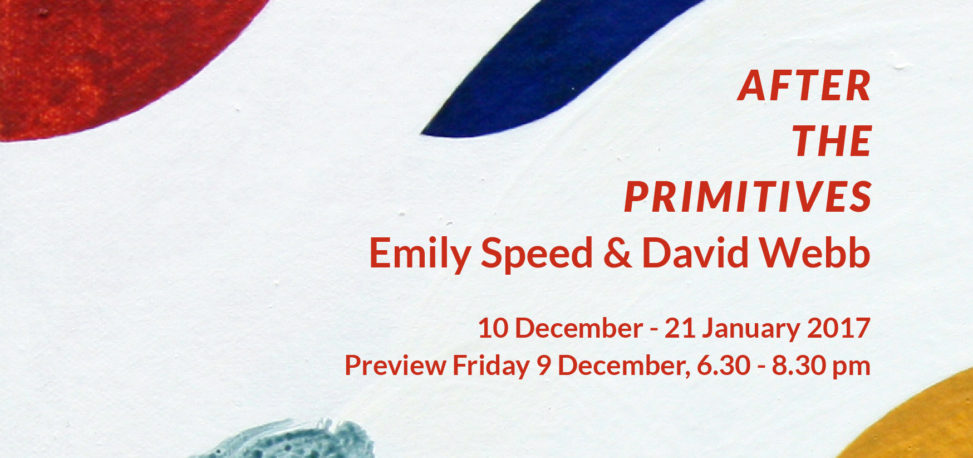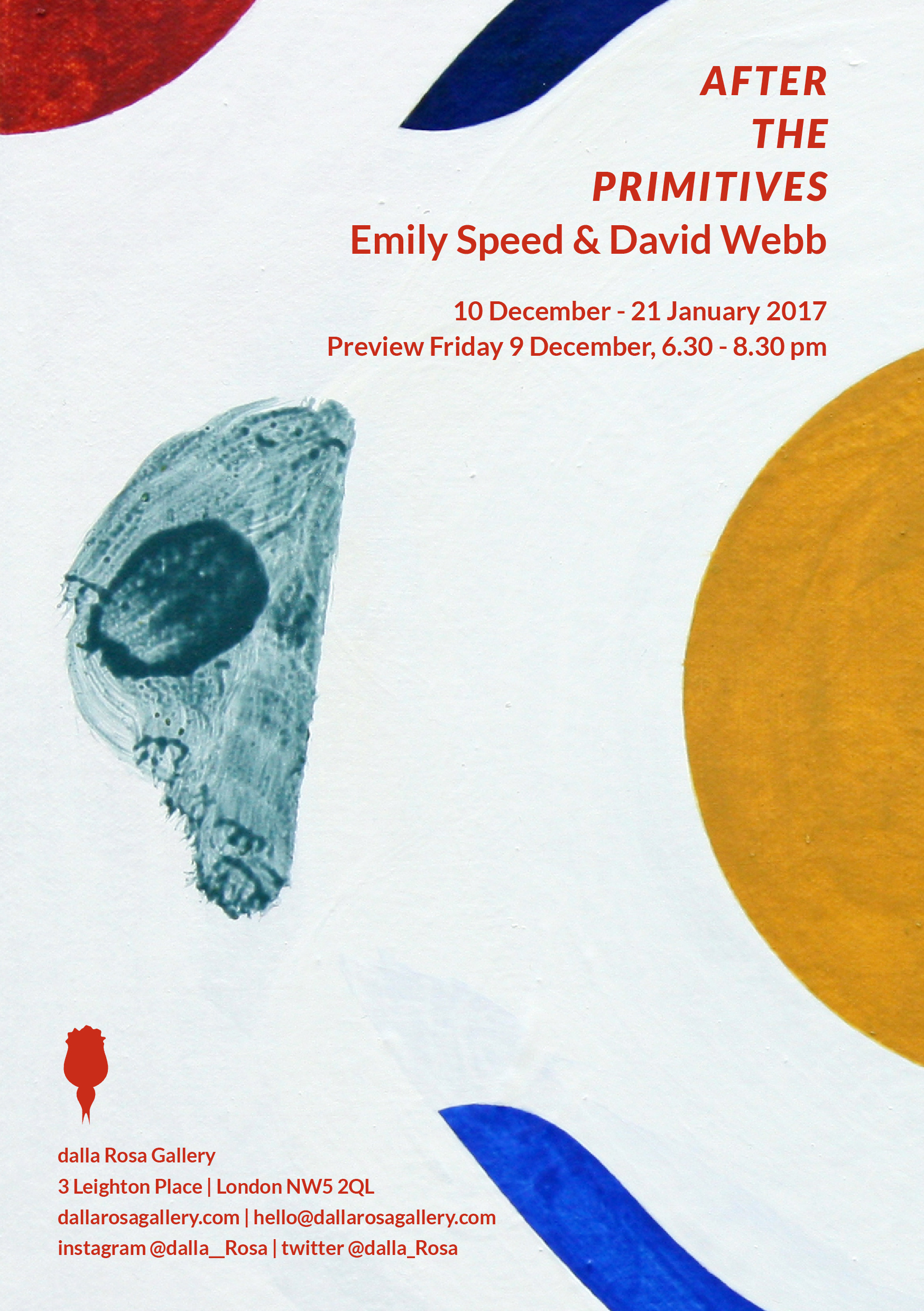AFTER THE PRIMITIVES
EMILY SPEED & DAVID WEBB
10 December – 21 January 2017
Preview Friday 9 December 6.30 – 8.30 pm
dalla Rosa Gallery
3 Leighton Place (Ground Floor)
London NW5 2QL
United Kingdom
Considering the different nature of their practices Emily Speed and David Webb seem a curious pairing, but similarities start surfacing when examining their work through the lens of a shared fascination with a certain visual culture. Both artists show influences routed in Mediterranean architecture and art (specifically before the 15th Century), After the Primitives aims to explore such influences.
Within art history the term primitive applied to Italian painters of the late Middle Ages refers to artists that precede the onset of Renaissance. Frowned upon by generations of art historians as the last expression of irrationality (as opposed to perfect perspective) the primitive painters played a pivotal role in bridging Medieval styles with the resurgence of classicism characteristic of Renaissance artists and architects.
Dubbed as primitives in the late 18th Century, these painters enjoyed a revival thanks to the declining interest in Old Masters such as Raphael, seen as champions of an over-stylised art that eventually developed in full-blown mannerism. The primitive painters’ attempts at perspective, their imaginative religious scenes, lively colours and characters were perceived as genuine and un-filtered by constraints of style. Speed and Webb reflect on this freedom and make it theirs through the use of acrylic paint, clay, wood, paper, and installation.
Emily Speed’s interest lies in the relationship between people and buildings, her work explores the body and its relationship to architecture. The idea of shelter and the inhabitant is at the core of much of Emily’s work; how a person is shaped by the buildings they have occupied and how a person occupies their own psychological space.
David Webb’s new and recent work is the continuation of major themes relating to a family story of migration, along with the ongoing influence of 13-15th Century Italian painting (particularly that of Siena) and Byzantine painted churches found in Cyprus. The paintings and works on paper are an exploration of image and memory and how these are stimulated, primarily by colour. The oblique, pared-down forms are often based on observations – notes and drawings – and historical research. David’s interest is not to recount narrative or present the recognisable, but to respond inventively within a formal space which fluctuates between flat abstraction and a (perhaps familiar) landscape, interior or still-life.

